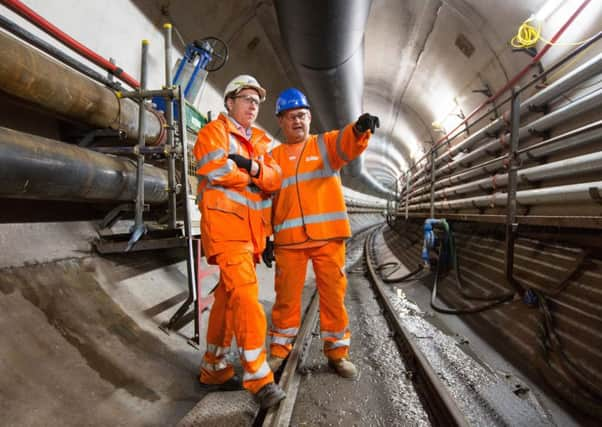South side set for homes boost from £100m tunnel


However the giant engineering feat of the massive Shieldhall Tunnel is also set to deliver considerable above-ground benefits.
The Scottish Water project will stretch from Queen’s Park to the Shieldhall waste water treatment works beside the Queen Elizabeth University Hospital.
Advertisement
Hide AdAdvertisement
Hide AdBut perhaps few southsiders are aware of its potential for homes development, in an area where lack of adequate sites can stall plans to create affordable housing.
As reported in The Scotsman, the £100 million project will pave the way for housing and commercial developments to go ahead that have been held back by the lack of waste water capacity.
The tunnel is needed because after a deluge of heavy rain water backs up in the system and floods houses and businesses.
It is currently underneath Titwood Road in Crossmyloof, three quarters of the way to Queens Park, where a crucial step forward is expected to take place in October.
Advertisement
Hide AdAdvertisement
Hide AdThe tunnel will break through a wall into a huge open chamber the depth of a five storey building, and a new 260ft long pipe will then connect it to the existing sewer - with water starting to flow along it by next April or May.
For the tunnellers, who do 12-hour shifts, there is only one way in and one way out – a 30-minute train ride over more than two miles from the tunnel mouth aboard a rudimentary carriage.
Tunnellers do alternative day and night shifts starting at 7am and 7pm, with work suspended at the weekend to give them a chance to rest and for maintenace.
Safety measures are exhaustive. Anyone going into the tunnel has to pass through a hand-recognition security turnstile and must carry a mini breathing apparatus set in case of fire or other emergencies. .
Advertisement
Hide AdAdvertisement
Hide AdThere are fire extinguishers along the tunnel, and waterfall-like “water curtains” every 500m, which are activated to prevent smoke spreading.
There are also detectors for explosive gases such as methane, but none has been found.